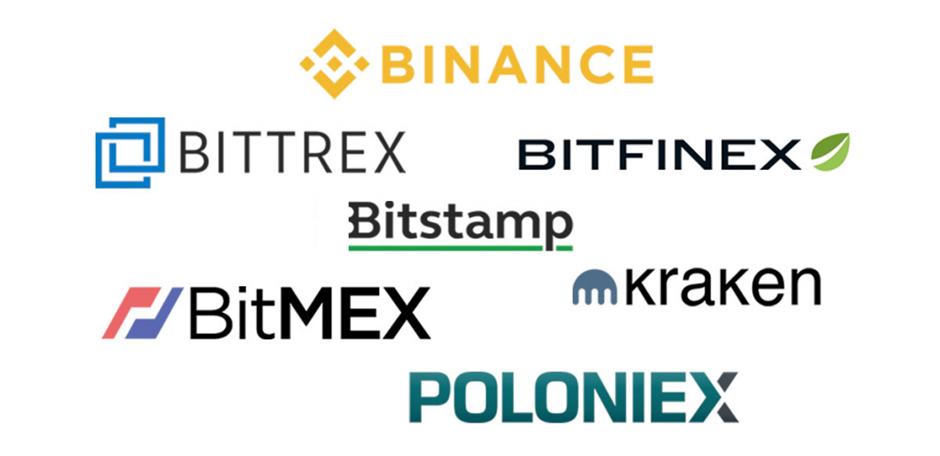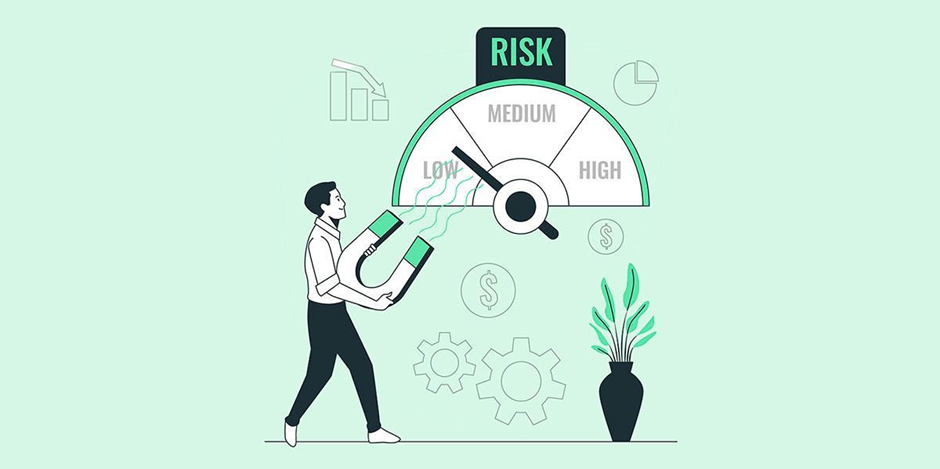How to Start Trading Cryptocurrency with Minimal Investment?

Contents
- Introduction
- A general view of the cryptocurrency market
- The reasons why Cryptocurrency attracts newcomers
- Why is it important to start with a minimal investment
- What you need to know before you start trading cryptocurrency
- How to choose a trading platform with minimal investments
- Recommendations on security and protection of personal data
- How to choose a cryptocurrency for trading
- What are demo accounts, and why use them
- Basic Cryptocurrency Trading Strategies
- Secrets of successful transactions with minimal investments
- How to manage risks with minimal investments
- How not to lose all funds in case of sharp fluctuations in the market
- Conclusion
Introduction
With its dynamic and volatile nature, the cryptocurrency market is a thrilling arena that attracts both seasoned investors and newcomers. The allure of quick earnings, even with a modest start-up capital, is a key factor driving the growing interest in cryptocurrencies. However, it’s crucial to remember that trading digital assets carries risks, and a conscious approach is essential, especially for those just embarking on this journey.
A general view of the cryptocurrency market
The cryptocurrency market, operating 24/7, offers flexibility that surpasses traditional stock exchanges. Bitcoin (BTC) and Ethereum (ETH) are the primary assets, but numerous altcoins also hold significant potential. These digital currencies are traded on exchanges, providing users with the power to buy, sell, and exchange assets at their convenience.
The main feature of the crypto market is its high volatility, which allows traders to earn even on small price fluctuations. However, it also makes the market extremely risky, especially for those who do not have enough experience.

The reasons why Cryptocurrency attracts newcomers
- Low entry threshold. Unlike the traditional stock market, where large sums are often required for investment, cryptocurrencies can be traded starting from a few dollars.
- Decentralization and accessibility. Cryptocurrencies are not linked to specific banks or states, which makes them accessible to all users with an Internet connection.
- High profitability. Due to the high volatility of the market, many crypto investors and traders were able to make significant profits in a short period of time.
- Various strategies. Beginners can choose different approaches to trading, such as short-term trading, long-term investing, arbitrage, and others.
- Technology development. The constant emergence of new blockchain projects and innovations creates additional earning opportunities.
Why is it important to start with a minimal investment
- Minimizing risks. Losses at the start can negatively affect motivation and financial situation. By starting with a small amount, you can avoid significant losses.
- Accumulation of experience. Beginners can learn through practice, testing strategies, and studying market behavior without the threat of losing significant amounts of capital.
- Psychological training. Emotional stability is essential in trading. Working with small amounts allows you to adapt to stress and avoid intense pressure.
- Gradual capital increase. Even with minimal investments, capital can be increased by applying sound risk management strategies.
What you need to know before you start trading cryptocurrency
Basic concepts: cryptocurrency, blockchain, exchanges
A cryptocurrency is a digital asset that works based on cryptographic methods. The main feature of cryptocurrencies is decentralization, which means there is no single issuer or regulatory authority.
Blockchain is a distributed ledger technology based on cryptocurrencies. It ensures data security, transparency, and immutability.
Exchanges are platforms for buying, selling, and exchanging cryptocurrencies. They can be centralized (CEX), such as Binance or Coinbase, and decentralized (DEX), such as Uniswap.
Risks and volatility of the cryptocurrency market
The cryptocurrency market is characterized by high price volatility, making it attractive to traders, but it also carries serious risks. The value of assets can change dramatically in a short time, opening up opportunities for high profits but also increasing the likelihood of losses. Prices are affected by news, major players’ actions, regulation changes, and the general market situation. Additionally, there is a risk of manipulation when large investors create artificial price movements to force retail traders to sell or buy at unfavorable moments.
Trader’s psychology and approach to minimizing losses
Emotions play a key role in trading. Without proper control, a trader can make impulsive mistakes. After losses, it is essential not to give in to tilt and not try to recoup instantly, as this often leads to even more significant losses. Effective risk management includes calculating the position size, limiting possible losses per trade, and following a pre-defined strategy. Discipline and emotional stability help to avoid panic decisions and maintain long-term trading efficiency.
How to choose a trading platform with minimal investments
When choosing a cryptocurrency trading platform with minimal investment, several factors must be considered, such as commissions, user-friendliness of the interface, availability of educational materials, and security. For novice traders, using exchanges with a straightforward interface and a low entry threshold is preferable to reduce the risk of mistakes and losses at the start.
An overview of popular cryptocurrency exchanges
- Binance is one of the largest and most popular exchanges in the world. It offers a wide range of cryptocurrencies and trading pairs and low fees for users with a certain level of activity. The platform supports beginners and experienced traders by providing various tools for analysis and trading.
- Coinbase is an ideal platform for beginners. It is easy to use, but its fees may be higher than on other exchanges. However, Coinbase makes buying and selling cryptocurrencies easy with minimal investment, especially for beginners.
- Kraken is known for its security and good reputation. Kraken offers a wide range of cryptocurrencies and low fees, especially for traders with large trading volumes.
- KuCoin is a convenient and affordable exchange with low fees and many altcoins. It also offers various educational materials, making it a good option for beginners.

Exchanges with low fees and user-friendly interfaces for beginners
If your main priority is low fees, pay attention to Binance and KuCoin. These platforms offer competitive commissions with high trading volume and minimize transaction costs. For beginners, Coinbase and Kraken are convenient, offering simple and intuitive interfaces and various hints and training materials.
Recommendations on security and protection of personal data
- Two-factor authentication (2FA) is a mandatory security measure that significantly reducing the risk of unauthorized access to your account.
- Cold wallets — To minimize hacking risks, store most cryptocurrency in cold wallets (not connected to the Internet).
- Passwords and Account security — Use complex and unique passwords for each account.
- Activity Monitoring — Check the activity on your account regularly and keep an eye out for suspicious transactions.
- Using reliable exchanges — Choose platforms with a good reputation and a history of protecting user data, such as Binance or Kraken.
How to choose a cryptocurrency for trading
Choosing a cryptocurrency to trade depends on your goals, level of experience, and approach to market analysis. The focus should be on capitalization, liquidity, volatility, and general market trends. Understanding how different cryptocurrencies can react to news and global events is also essential.
The most popular cryptocurrencies
- Bitcoin (BTC) is the first and most famous cryptocurrency. It is often considered “digital gold” and serves as an indicator of the entire crypto market. Bitcoin has the highest capitalization and is the most liquid asset.
- Ethereum (ETH) is the second-largest cryptocurrency by market capitalization. It differs from Bitcoin in its functionality, providing the opportunity to create decentralized applications (dApps) and smart contracts. This makes Ethereum an attractive asset for investors interested in blockchain technologies.
- Litecoin (LTC) was created as an alternative to Bitcoin with improved transaction speed and commission characteristics. Litecoin has a stable reputation and a reasonably high liquidity, but it does not have the same level of innovation as Ethereum.
- Binance Coin (BNB) is a cryptocurrency created for use on the Binance platform. It is popular due to reduced trading commissions on the exchange and its use in the Binance ecosystem.
- Cardano (ADA) is known for its scientific approach to developing blockchain technologies. It attracts attention due to its advanced methods of transaction confirmation (Proof of Stake) and its ability to use smart contracts.
How to analyze and choose suitable coins for trading
When selecting a cryptocurrency, it is essential to consider several factors:
- Technical analysis involves analyzing price charts and trading volumes to identify trends and predict future movements.
- Fundamental analysis is the study of the technical aspects of cryptocurrency, such as the development team, partnerships, innovations, and the project’s long-term relevance.
- Community and News — monitoring of news and activity around cryptocurrencies. Positive news about cooperation or project development can significantly affect the price.
- Liquidity — the higher the liquidity of a cryptocurrency (the more it is traded on exchanges), the easier and faster it is to make transactions with minimal slippage.
Risk assessment based on capitalization and volatility
Capitalization — Highly capitalized cryptocurrencies such as Bitcoin and Ethereum are usually more stable and less susceptible to sudden price fluctuations than altcoins. This makes them safer for long-term investments.
Volatility — cryptocurrencies with lower capitalization are often more volatile. This can mean big profits and significant risks. Traders using such assets should be prepared for sharp price fluctuations.
Risks and Opportunities — Lower capitalizations can offer potentially higher returns, but they are more vulnerable to manipulation and may experience large price fluctuations. It is essential to consider your risk appetite and the level of volatility you are willing to withstand.
Ultimately, it is crucial to choose coins that you are interested in in terms of their long-term value and prospects, and consider your ability to analyze the market and respond to changes.
What are demo accounts, and why use them

A demo account is a virtual account that allows you to trade on the real market using fictitious money. It is a great way for beginners to get to know trading and understand how the platform and the market work without risking real money. Demo accounts provide an opportunity to learn without worrying about losses, which makes them ideal tools for those who are just starting out.
Advantages of using demo accounts for practice
Demo accounts provide an opportunity to train without financial risk. This is an ideal way to master the exchange’s interface and understand the trading mechanisms. You can test different strategies, such as buying and selling at different prices, and analyze the market without worrying about losses. It also helps to reduce stress and focus on learning without being distracted by the consequences of mistakes.
How to train without risk of losses
Using a demo account, training regularly to develop trading skills is important. You can try different strategies and adapt them to your trading style based on actual market conditions, but without the threat of losses. The main thing is to adhere to discipline and approach training as if it were real money.
Basic Cryptocurrency Trading Strategies
When trading cryptocurrencies, you can use different strategies, depending on your goals, time, and the level of risk you are willing to accept. The main approaches are divided into long-term and short-term strategies.
Long-term and short-term strategies
Long-term strategies focus on investing in cryptocurrencies to make a profit in the future. This usually involves buying a cryptocurrency and holding it for a long time, hoping for a price increase. This approach is suitable for those who believe in the future of blockchain technologies and are willing to wait a few years.
Short-term strategies involve active trading during the day or weeks. In this case, traders seek opportunities to profit from short-term price fluctuations. These strategies can include scalping (buying and selling within minutes or hours) and day trading (active trading throughout the day).
How to use technical and fundamental analysis
Technical analysis involves analyzing charts and price movements to predict future trends. Indicators such as moving averages, RSI, and MACD can be used to determine the moments to enter or exit the market.
Fundamental analysis includes studying factors that can affect the price of cryptocurrencies, such as news, changes in legislation, partnerships, and innovations in blockchain technologies.

Secrets of successful transactions with minimal investments
- Risk management — not risking more than 1-2% of your deposit in one transaction is important. This helps to limit losses and avoid getting into significant disadvantages, especially with small investments.
- Trade planning — always determine the entry and exit points in advance. Decisions made based on emotions often lead to losses.
- Using a demo account — practice on a demo account before risking real money. This will help you understand the trading process and test risk-free strategies.
- Small transactions and diversification — invest all your money in one cryptocurrency. It is better to diversify investments to minimize risks.
- Discipline — follow the strategy and do not try to recoup losses. Emotional decisions can lead to even more significant losses.
How to manage risks with minimal investments
Risk management is key to successful trading, especially if you have limited capital. You can quickly lose all your funds without the right strategy, especially in the volatile cryptocurrency market.
Money management strategies
One of the most effective risk management strategies is position sizing. It is crucial not to risk more than 1-2% of your capital in one trade. This way, even if the trade is unsuccessful, your losses will be limited and you can continue trading. For example, if you have $1,000, you should not invest more than $10-20 in one trade.
It is also important to divide capital between several assets. Diversification reduces risks, because even if one asset falls in value, others can profit.
Use of stop orders and limit orders
Stop orders help limit losses by automatically closing a trade if the asset price reaches a set level. For example, if you bought a cryptocurrency for $100, you can set a stop order at $95. If the price drops to $95, the order will be executed and the deal will close, minimizing your losses.
Limit orders allow you to set in advance the price at which you want to buy or sell cryptocurrency. This helps to avoid buying at too high a price or selling at too low a cost. For example, you can set a limit order to buy cryptocurrencies if the price drops to a certain level.
How not to lose all funds in case of sharp fluctuations in the market
It is essential to follow several recommendations to avoid losses in conditions of high volatility:
- Use stop losses. This is the primary tool to protect against sudden price fluctuations. A stop loss automatically closes a trade if the price moves against you.
- Don’t invest all your funds in one trade. Even if you are confident in the growth of a specific cryptocurrency, you should not put all your money on one coin. Diversification helps to reduce overall risk.
- Don’t try to recoup your losses. This is a common mistake for beginners. After losses, many traders start making riskier bets, trying to get money back quickly, often leading to even more considerable losses.
- Review your strategy regularly. The cryptocurrency market can change a lot, and it is vital to adapt to new conditions. Periodically check your positions and adjust them if necessary.
These measures will help you reduce risks and avoid losing all your funds, even with minimal investment. The main thing is to be disciplined and avoid impulsive decisions.
Conclusion
Trading cryptocurrencies with minimal investments is an accurate way to enter the crypto market and start making money, even if you don’t have much money. The main thing is approaching this process wisely, learning the basics, developing market analysis skills, and managing risks. Using demo accounts will help you train without the risk of losses, and proper money and risk management strategies will ensure stability in trading. Don’t forget about discipline, planning, and continuous learning. With the right approach, patience, and practice, you can successfully trade and gradually increase your investments, even with a small start-up capital.